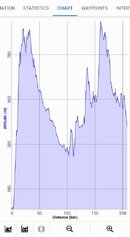There’s been some really informative comments in this thread, hopefully someone can help me figure out a scenario:
Scenario: I have accommodations at approx 1800 ft elevation, which is about a 15 minute drive away from the dive boats at sea level (Kona). I am planning a series of dives over a few days, probably 3-6 dives, 32%EAN. Looking through the Navy Dive Tables, I think this should be feasible for the morning dives, easy enough to do 2+ hours afternoon surface interval, which meets the recs for up to Group K . The dives that concern me a bit are the night dives, after which it would be great to just go straight home. The night dives will be pretty passive, though. Very low work, just passively hanging out around 50fsw breathing 32%EAN.
Most of the literature I’ve found addresses diving AT elevation, meaning that you surface at elevation and thus use adjusted dive depths, OR it discusses only ascending to elevation AFTER diving. I haven’t been able to find anything that addresses DESCENDING from elevation to then dive, and the RE-ASCENDING after, where I assume some acclimitization and more rapid off-gassing will occur.
How should I handle this scenario?





